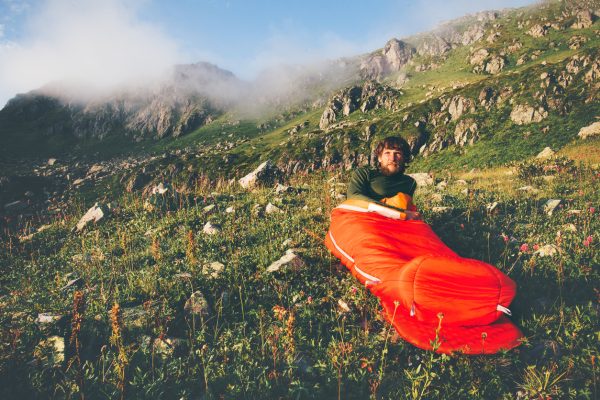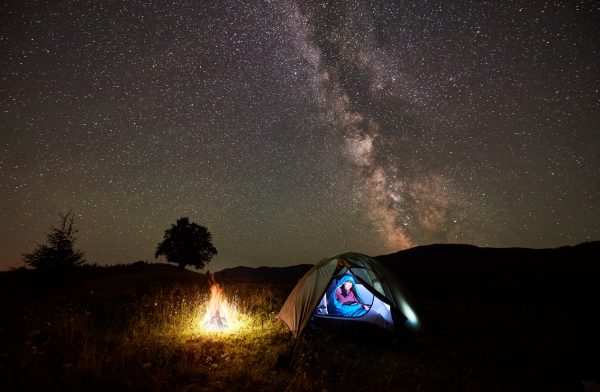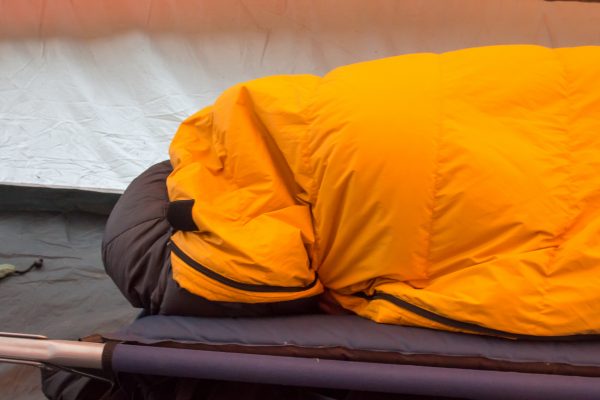My Tips On How to Choose the Best Sleeping Bag
Overwhelmed. That is the first word that comes to mind when I think about the first stages of buying my overnight backpacking gear. Specifically, sleeping bags.
Should you get a down bag or a synthetic bag? Maybe you should get a blend? Why are sleeping bags gender specific? What temperature rating do you need?
These are just some of the millions of questions I hurled at the poor REI sales associate that was burdened with helping me. He almost looked scared as I rattled off 3 weeks’ worth of concerns I had whittled down prior to going to the store. Luckily, he didn’t run away.
The truth is there is no perfect sleeping bag, but there is one perfect for you. Here are some things to consider prior to browbeating your local outdoor retailer.
What type of season will you be backpacking in?
Arguably, this is the most important question when choosing a sleeping bag. Most other features will fall in line.
If you are going to be hiking during the warm summer months you will want a summer season bag. This is beneficial because they are lighter in weight and therefore much easier to transport. These bags are generally rated for temperatures 30 degrees and higher so even if it gets a little chilly at night you will stay cozy.

If you want to hike through the spring and fall months, or if you are hiking through various altitudes where temperatures can shift drastically, you would need a 3-season sleeping bag.
The temperature rating for these is generally for 15 to 30 degrees. It is important to note that you want to account for the coldest potential temperatures you could experience. Even if the bag is rated for 15 to 30 degrees you can use it in warmer temperatures by unzipping as to not overheat.
The winter sleeping bag (which you may also see as a zero-degree bag) is rated for temperatures 15 degrees and below. However, this doesn’t mean just grab the first winter bag you see and head for the snowy peaks.
In each scenario you also want to be looking for the ISO or EN ratings. These ratings mean standardized tests have been run on the sleeping bag, allowing you to reliably compare different brands.
The ISO/EN tests give you two types of temperature ratings. One for comfort and the other for limit. The comfort rating is the lowest temperature the average “cold sleeper” is comfortable. The limit rating is the average lowest temperature it keeps a “warm sleeper” in a “situation of fighting against cold but in thermal equilibrium”.
Which leads to….
Do I really need a gender specific bag?
The answer of course is no. But, there are characteristics that make them different.
A woman’s sleeping bag is generally shorter, which in turn makes them cheaper. Lesser material used means a lesser costing product. It’s that simple. The other characteristic is that these sleeping bags are made specifically for cold sleepers. A woman’s average temperature, specifically in the hands and feet tends to be about 2.8C lower than a man’s. So, a little extra fluff can be very beneficial in cooler climates.
Down v. Synthetic v. Blend
This is a long existing battle between backpackers. Both down and synthetic have their own admirable features but they carry their fair share of cons as well. You would hope a blend of the two would render the perfect sleeping bag but that is not necessarily true either. Here are the facts you need to know.
- DOWN
Down insulation has long been the favorite choice for outdoor enthusiasts. It is light, easy to compress, is breathable and lasts forever. Down also has an unparalleled ability to trap and retain heat making it the only choice in cold dry climates.
The Achilles’ Heel? Water. Down’s heat trapping abilities lie solely on retaining the loft of its filaments. When exposed to water that loft is lost, and your sleeping bag becomes a cold sloppy mess. This not only becomes an issue in rain drenched circumstances but even morning condensation or sweat can affect the down’s ability to insulate.

Further, it takes a very long time for the down to dry back out meaning you could get stuck sitting around the tent waiting a day for it to repair itself.
- SYNTHETIC
This is where synthetic steps in. This cheaper option is quick to dry and retains its insulating power even when wet. Synthetic insulation is also hypoallergenic and is resistant to abrasion. While this may make synthetic seem like the reasonable option, there are some additional factors to consider.
Synthetic’s warmth-to-weight ratio is no where near that of down. These sleeping bags tend to be bulkier and lose insulating power each time they are stuffed in their sack.
This means you will be shelling out more money in the long run to purchase an additional replacement sleeping bag if used regularly.
- BLEND
The idea of a down/synthetic blend sleeping bag is to provide the benefit of both options while limiting their respective imperfections. Some blends mix the synthetic and down fibers through the bag while others strategically place them in the areas they are of the most use. For example, some sleeping bags come with synthetic insulation lining the bottom of the bag where down loses its most loft when compressed.
While these can be great in some instances, it is important to note that you are also reducing the benefits of both. These won’t be as warm and durable as solely down bags and they won’t retain quite as much heat when wet like solely synthetic bags.
WHAT IS BEST?
This all I wanted that helpful little associate to tell me, but like he said, it is just not that simple. If you plan on hiking long distances in drier climates you should consider down.
If you are intending trips through the rainforest or the Appalachians during the rainy season maybe go with synthetic. If you are a novice hiker and aren’t sure how much use you will get from the sleeping bag, consider a blend so you can try them both out.
Shape Affects Weight
There are three general shapes you will find in backpacking sleeping bags: mummy; semirectangular; and rectangular. Rectangular sleeping bags are probably the most familiar as they are widely used for camping. However, these roomy cocoons are not generally recommended as a backpacking sleeping bag.
While their size allows you to twist and turn in your sleep it also means more weight for you to carry on the trail and less heat trapping abilities because there is more space for the cold air to get in.

Mummy bags are their streamlined backpacking counterpart. Their slim snug fit allows for maximum warmth and the reduction of excess materials that add unnecessary weight. This is the top choice for most long-distance hikers.
However, if you are a little claustrophobic and shiver at the thought of being cinched in, flipping around like a Roly poly the semirectangular bag may be a better fit. They allow for a bit more wiggle room without carrying the heavy weight of a normal rectangular sleeping bag.
Does A Sleeping Bag Have To Be A Bag?
My mind was spinning with all of this information when I was introduced to the concept of a sleeping quilt. A sleeping quilt sort of solves the problem of choosing a sleeping bag to take on hikes in various climates and weather conditions as well as concerns with cost and quality.
It is nothing like the quilt that your grandmother made for you when you were a baby. Instead it is a sleeping bag with a foot box and no back. Due to less fabric being use they tend to be more affordable for high quality water-resistant down filling and lighter in weight for those long treks.
As mentioned earlier, down loses its loft when laid on anyway making the back an unnecessary and expensive addition. The quilt combined with an insulating pad with keep you just as warm at a fraction of the price. Quilts usually come with straps that will help secure it to the pad which can cinch down and eliminate drafts on cold nights.
Even better is can be used as just a blanket allowing you to utilize it even in warmer conditions. I have to say I was sold on this style because of this versatility.
Making the Decision
Once you have decided on what features, style and weather type you want out of a sleeping bag there are just a few more things that you want to make sure are included across the board.
First is making sure that your backpacking sleeping bag has been treated or was made with some form of water-resistant product. Even though you will stay warm in a synthetic, you will still be wet.
lso, just like any piece of backpacking gear, you want to try it out. Wiggle on in while you are at the store and make sure the sleeping bag fits your frame. I am sure the employees have seen stranger things.
Finally, don’t be afraid to make a mistake. Your needs will probably evolve as you choose different seasons or locations and continue to push your backpacking skills. You can always sell or exchange the sleeping bag as you expand your backpacking repertoire.





